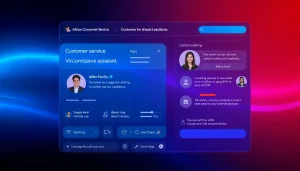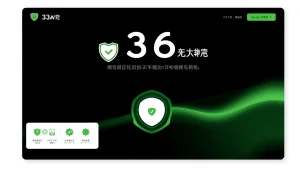Enhancing Sales Effectiveness through Competitive Intelligence for Sales
Understanding Competitive Intelligence for Sales
Defining Competitive Intelligence for Sales
Competitive intelligence for sales (CI) refers to the systematic gathering and analysis of information regarding the competitive landscape in which a business operates. This includes the monitoring of competitors’ strategies, strengths, weaknesses, and products, as well as market trends and customer behaviors. The aim is to equip sales teams with actionable insights that can help them tailor their approaches and improve success rates.
In essence, CI encompasses a range of activities designed to transform data into meaningful information that impacts decision-making on various levels. Whether it is through competitor product analysis, market positioning, or understanding customer feedback, the ultimate goal of competitive intelligence for sales is to create a strategic advantage in the marketplace.
Importance in the Sales Process
The significance of competitive intelligence for sales cannot be overstated. In competitive markets, sales teams must stay ahead of the curve to survive and thrive. With the right intelligence, sales representatives can:
- Understand the competitive landscape and identify key players.
- Quantify their own strengths and weaknesses against competitors.
- Anticipate market changes and respond proactively.
- Craft personalized pitches based on competitor weaknesses.
- Utilize insights for more effective marketing and positioning strategies.
Sales teams that leverage CI are not only better prepared to handle objections but also have a greater likelihood of closing deals. Competitive intelligence becomes a foundational element of the sales process, providing team members with the data they need to differentiate their offerings and articulate unique value propositions.
Key Components of Competitive Intelligence
To effectively implement competitive intelligence within a sales framework, it is essential to understand its key components. These include:
- Data Collection: Gathering relevant information from a variety of sources including digital channels, industry reports, press releases, and competitive analysis tools.
- Data Analysis: Reviewing and interpreting the data collected to identify trends, opportunities, and risks associated with competitive dynamics.
- Actionable Insights: Translating analytical findings into strategies and tactics for sales teams to employ in their approaches and presentations.
- Monitoring: Continuously observing changes in the competitive landscape to adjust strategies as required.
Understanding these components enhances a sales team’s ability to utilize competitive intelligence effectively.
Gathering Data for Competitive Intelligence
Methods of Data Collection
Gathering data for competitive intelligence can be approached through several methods. These methodologies can be broadly classified into primary and secondary sources:
- Primary Research: Engaging directly with customers, conducting surveys, or interviewing industry experts to collect firsthand data.
- Secondary Research: Utilizing existing information available through reports, industry publications, competitor websites, social media, and news articles.
- Digital Monitoring: Using tools to track competitors’ online activities, pricing strategies, and user sentiment.
- Networking: Attending industry events, trade shows, and forums to gather insights through discussions and observations.
A well-rounded approach combining these methods will yield a rich pool of data to inform competitive intelligence practices.
Leveraging Market Research
Market research plays a crucial role in shaping competitive intelligence strategies. By conducting thorough market research, businesses can:
- Identify market trends and customer preferences to predict future sales opportunities.
- Gain insights into potential gaps in the market that competitors may not address.
- Understand pricing strategies and value propositions of competitors effectively.
- Segment target audiences more accurately based on behavioral and demographic data.
Research tools and methodologies, including surveys, focus groups, and analytics, can provide detailed insights that enhance the effectiveness of sales pitches.
Utilizing Technology and Tools
The modern sales environment calls for the integration of sophisticated technology tools to gather and analyze competitive intelligence data efficiently. Tools such as:
- Customer Relationship Management (CRM) Systems: Help track customer interactions and feedback that can inform competitive strategies.
- Competitive Intelligence Platforms: Offer real-time data monitoring on competitors regarding product launches, pricing changes, and market entries.
- Data Analytics Software: Enables the analysis of collected data to identify trends and patterns that inform sales practices.
- Social Listening Tools: Allow sales teams to monitor customer conversations and sentiments regarding competitors’ offerings.
By leveraging these technologies, organizations can enhance their capabilities in data collection and analysis, ultimately improving their sales strategies.
Analyzing Competitive Intelligence Data
Identifying Trends and Patterns
Once data has been gathered, the next step is to analyze it for trends and patterns that can provide insights into competitive behavior and market dynamics. This analysis requires:
- Utilizing statistical and data visualization tools to create reports that identify emerging trends.
- Regularly updating market research findings to keep the information relevant and actionable.
- Conducting SWOT analyses (Strengths, Weaknesses, Opportunities, Threats) to assess overall competitive positioning.
- Segmenting data by customer demographics, geographic areas, and product types to pinpoint where specific trends are occurring.
Understanding these trends not only informs sales strategies but also helps in anticipating competitor movements.
Assessing Competitor Strengths and Weaknesses
A critical aspect of competitive intelligence lies in evaluating where competitors excel and where they may falter. To perform this assessment, sales teams should:
- Conduct thorough analyses of competitors’ products and services, looking for unique selling points.
- Gather customer feedback and testimonials that highlight competitors’ strengths and weaknesses.
- Review industry benchmarks to compare performance metrics against competitors.
- Create a competitive matrix to visualize the strengths and weak points of different competitors clearly.
By accurately assessing competitors, sales teams can develop tailored strategies that exploit competitors’ weaknesses and position their offerings more compellingly.
Aligning Insights with Sales Strategies
Having gathered and analyzed competitive intelligence data, it is vital to align these insights directly with the sales strategies implemented by the organization. This alignment involves:
- Regularly updating sales collateral and presentations based on the latest CI findings.
- Encouraging collaboration between sales and marketing teams to ensure messaging is consistent and reflects competitive insights.
- Developing pitches that articulate how products/services overcome competitors’ challenges.
- Creating playbooks that outline competitive strategies and countermoves based on anticipated competitor actions.
This objective alignment transforms competitive intelligence from a theoretical practice to an integrated component of every sales interaction, maximizing the potential for success.
Implementing Competitive Intelligence in Sales Teams
Best Practices for Application
To fully realize the benefits of competitive intelligence, sales teams must adopt specific best practices for its implementation. These practices include:
- Establishing a CI culture within the sales organization, emphasizing its importance in daily activities.
- Creating clear processes for how to collect, share, and utilize competitive intelligence data within teams.
- Regularly training sales staff on the competitive landscape and providing updated insights.
- Utilizing technology to streamline the CI process and make data easily accessible across the organization.
Implementing these best practices can lead to significant improvements in sales performance and team cohesion.
Creating Battlecards and Resources
One of the most effective tools in competitive intelligence is the development of battlecards. These are succinct reference documents that sales teams can use during interactions with prospects. Essential components of effective battlecards include:
- Concise summaries of competitive products, highlighting key features and benefits.
- Comparative analysis that positions your own offerings against competitors.
- Common objections encountered and suggested responses based on competitive insights.
- Client testimonials that showcase strengths of the product over competitors.
Battlecards empower sales teams to respond swiftly and knowledgeably during engagements, ultimately improving their chances of closing deals.
Training Sales Teams on Competitive Insights
The successful integration of competitive intelligence into sales operations is heavily reliant on effective training. This training should focus on:
- Understanding the fundamentals of competitive intelligence and its role in sales.
- Employing tools and resources effectively to access and utilize competitive data.
- Role-playing scenarios where sales staff practice using competitive insights in pitches.
- Encouraging ongoing learning and engagement with new CI updates.
Investing in training ensures that sales teams are not only informed but also equipped to leverage competitive intelligence effectively.
Measuring the Impact of Competitive Intelligence on Sales
Key Performance Indicators (KPIs)
To gauge the effectiveness of competitive intelligence initiatives, organizations should identify specific Key Performance Indicators (KPIs). These KPIs could include:
- Win rates against competitors based on sales data.
- Time to close deals, particularly in competitive scenarios.
- Increases in revenue attributed to competitive insights utilized in sales strategies.
- Feedback from customers on how well sales teams addressed competitive aspects in their proposals.
Tracking these KPIs provides valuable insights into the impact of competitive intelligence on overall sales effectiveness.
Tracking Success and Adjustments
Regularly assessing the outcomes of competitive intelligence initiatives is crucial for continuous improvement. This involves:
- Setting up regular reviews to analyze sales performance against identified KPIs.
- Gathering feedback from sales teams about the perceived utility of the competitive intelligence resources provided.
- Making data-driven adjustments to strategies based on performance evaluations.
- Recognizing trends in success rates relative to changes in competitive dynamics.
Adapting strategies based on these assessments can lead to enhanced sales outcomes over time.
Continuous Improvement Through Feedback
Continuous improvement in competitive intelligence practices is achieved through a feedback loop involving all stakeholders. This includes:
- Encouraging sales team input on what competitive data is actionable and valuable.
- Creating mechanisms for collecting feedback from clients on their perception of competitors during the sales process.
- Utilizing market changes and trends as opportunities to refine competitive intelligence efforts.
- Incorporating lessons learned from competitive interactions into training modules for sales teams.
Such a feedback-driven approach ensures that competitive intelligence remains relevant and adapts to the evolving sales landscape.













Post Comment